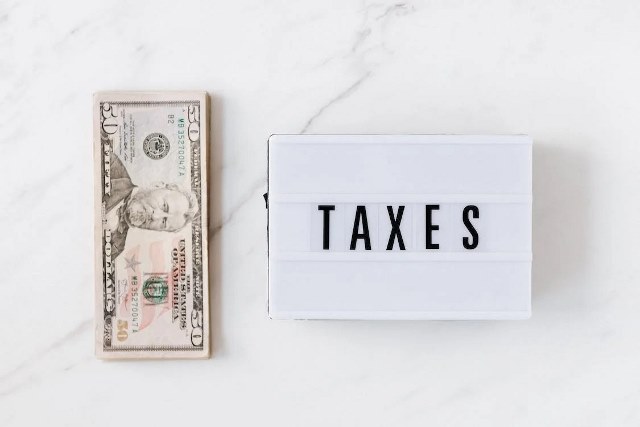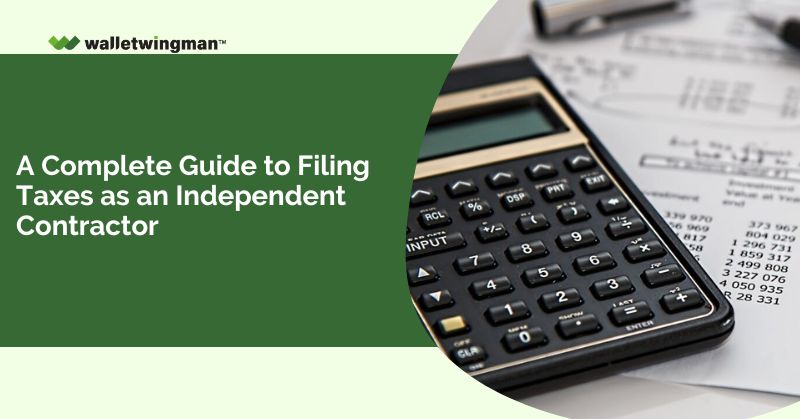So many independent contractor jobs are on the market, including website design, Uber driving, teaching jobs, independent distributors, etc. These kinds of jobs offer many advantages but also have some unique responsibilities. Independent contractors file taxes differently and must do it on their own.
You’ve come to the right place if you don’t know your tax obligations as an independent contractor and how the process works. Before discussing anything else, you should understand that independent contractors have unique tax requirements, and their taxes aren’t the same as for W-2 employees.
Employees don’t have many obligations to their taxes; they simply pay them once they’ve earned their income. Things aren’t that simple for independent contractors, and taking all the necessary steps to avoid issues is essential.
Who are independent contractors?

Before you can learn how to file taxes as an independent contractor, you must ensure that you’re an independent contractor and have these tax obligations.
Independent contractors are all self-employed individuals or small business owners who provide services to other businesses, entities, or people.
Independent contractors can’t be the employees of the business, entity, or person to whom they provide services. They can have written contracts that provide information about their services, to whom they offer them, and the compensation.
However, there’s no obligation to put their contracts on paper. Of course, having the paperwork and necessary invoices can help you when filing taxes or explaining your finances to someone.
Am I an independent contractor?

If you’re having trouble determining if you fall into this income tax category, here’s how to determine if you’re an independent contractor. The main issue is determining if you or the business you work for controls your work operations and how you approach the job.
Do you have the power to control the financial aspects of your job and how you behave during your work hours? Does your company decide these things for you? If you do, then you are an independent contractor.
On the other hand, if you receive employee benefits like sick pay, vacation, or health insurance from a company, you’re probably an employee and not a contractor.
How should independent contractors file their taxes?

Independent contractors are self-employed, meaning they must report their income and handle tax obligations. There’s no employer they directly work for who will pay their taxes from their income. That means that you should keep track of your monthly earnings and all other relevant finances.
In this scenario, how much do you need to put aside for your taxes? The tax amount you must pay varies from one case to another. However, there’s a general rule you should follow- set aside around 25% of your yearly income to take care of your tax obligations.
Even though filing taxes might seem scary initially, it’s not that difficult once you do it right. Here are the main steps you need to follow:
- Report your taxable income;
- Calculate your tax amount;
- Get any tax deductions you can;
- Make your quarterly payments (tax).
How to report taxable income?
Whether a freelancer or an independent small business, the IRS classifies you as self-employed. That means you must follow different tax rules than company employees. Reporting your income is unnecessary if you’re an independent contractor with earnings under $400.
If your income exceeds this number, the IRS considers it taxable income, and you must report it using Form 1040, a master sheet tax return. You fill out this form at the end of each year. However, independent contractors must also file an additional Schedule C form and Form 1040.
You must provide detailed information about your losses, profits, and deductible expenses here. Take the time to fill out the form carefully and with utmost accuracy. You can download Schedule C Form 1040 from the IRS’s official website.
How to pay self-employment taxes?
The second form you must file out is the Schedule Self Employment or Schedule SE. Self-employed individuals don’t have employers who can withhold money from their paychecks for Federal Insurance Contribution Act (FICA) taxes, meaning you must do it on your own.
Remember that you must pay self-employment taxes if your yearly net earnings are at least $400. These taxes are for Social Security and Medicare contributions.
While typical employees pay half of the FICA amount, and their company covers the other half, self-employed individuals or independent contractors must cover the entire amount.
You must pay for the amount via the Schedule SE tax. Self-employment taxes are usually steep, and the current rate is 15.3% of 92.35% of your yearly net earnings. The IRS allocates 12.4% of the tax rate to Social Security and the remaining 2.9% to Medicare.
Some independent contractors must pay an additional 0.9% for Medicare if their income exceeds the current threshold amount the IRS has set. This amount varies according to the filing status:
- When filing jointly as married individuals, the threshold is $250,000.
- When filing separately as married individuals, the limit is $125,000.
- When filing as a single individual, the amount is $200,000.
You file the Schedule SE at the end of the year with Form 1040.
How to calculate self-employment taxes?

The best way to calculate your taxes as a beginner independent contractor is to use a calculator. There are many free calculators available, and they work similarly. First, you must add your net earnings in US dollars, and the calculator will give you the correct tax rate according to your 92.35% amount.
In other words, the calculator will extract the taxable base for you. However, if it doesn’t do it, you must figure out the taxable base and enter your earnings.
Furthermore, ensure you select the filing status so your chosen calculator can determine if you must pay additional tax for your Medicare.
Once you do that, the calculator will provide your total SE, Medicare, and Social Security taxes.
How to claim tax deductions as an independent contractor?
Even though the tax rates are usually steep for freelancers and independent contractors, you can use many business tax deductions. You report the deductions along with Schedule C. All independent contractors can get self-employment deductions that allow them to pay half of their SE tax.
Independent contractors can write off many expenses, including:
- Office mortgage expenses
- Training and education expenses
- Equipment expenses
- Lease or rent expenses
- Advertising and marketing expenses
- Phone and internet expenses
- Office expenses
- Business insurance expenses
- Gas expenses
To explain better, let’s use a freelance writer as an example for tax deductions. The writer can deduct their expenses for online courses to improve their writing skills. On the other hand, if the writer works from home, they can claim the home office deduction.
The writer can also acquire equipment for work, like a better computer or an additional monitor, and write off those expenses.
How to make your quarterly payments (tax)?
You must make quarterly tax payments if your taxes are $1,000 a year or more. You will have to do calculations independently to get an approximate estimate of the amount. You can do that by looking at your tax obligations for the previous year or your current income.
Use Form 1040-ES Estimated Tax Worksheet to calculate your quarterly amount. You must make the quarterly tax payments in April, June, September, and January of the upcoming year. Since you can’t know the exact amount you must pay until you’ve filed the personal tax return before the start of the following year, you must be careful with the estimates.
The best strategy is to allocate finances for your quarterly payments and add additional funds if necessary. Missing quarterly payments means you will have to pay penalties.
Things to Know About Form 1099-NEC

Independent contractors don’t have to fill out Form 1099-NEC, which they receive from their clients. If a project or other work you’re doing for a particular business is worth over $600 per year, they must report their payments through this form.
It doesn’t matter if it was a single payment or multiple payments. If the amount is over $600 during the taxable year, they must file this form to the IRS and send you a copy. This form helps you get the information you need for your taxable income and calculate the taxes more accurately.
Remind your clients that they should send you a copy of the form to help you avoid difficulties when filing taxes. Even if they don’t, that is not an offense on your part, and they will face penalties. However, you should keep track of these payments and report this income.
Summary
As an independent contractor, you must file taxes, which is your legal obligation. If you’re having difficulties doing it for the first time, consider seeking professional help until you’ve learned how to file taxes properly to avoid any future penalties or issues with your business.
Taxes are an essential aspect of any business. If you fail to file your taxes correctly, the consequences can be very damaging. Therefore, it is crucial to take care of this with diligence. Contact a professional to help you do this flawlessly.


